11 Loving Signals Dogs Use To Show Affection (And 4 Behaviors That Mean ‘Give Me A Break’)
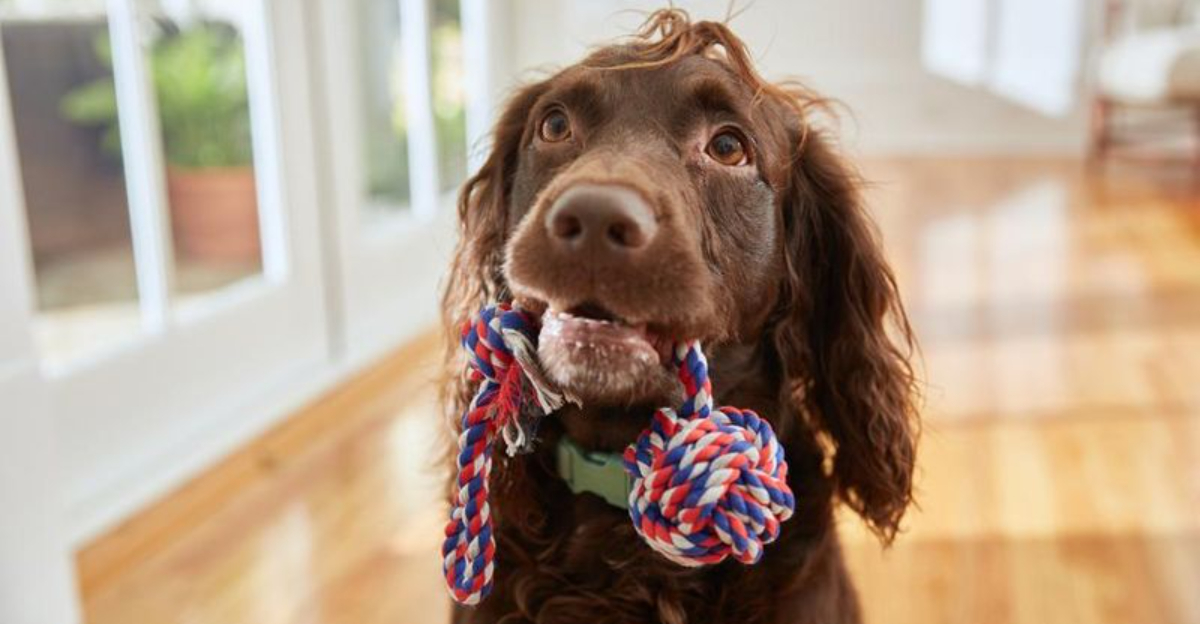
Ever wonder what your four-legged friend is trying to tell you? Dogs may not speak our language, but they’re constantly communicating through body language and behaviors.
Understanding these signals can strengthen your bond and help you respond appropriately to your pup’s needs.
From tail wags to cuddle sessions, let’s decode what your dog is really saying when they’re feeling the love – and when they need some space.
1. The Full-Body Wiggle
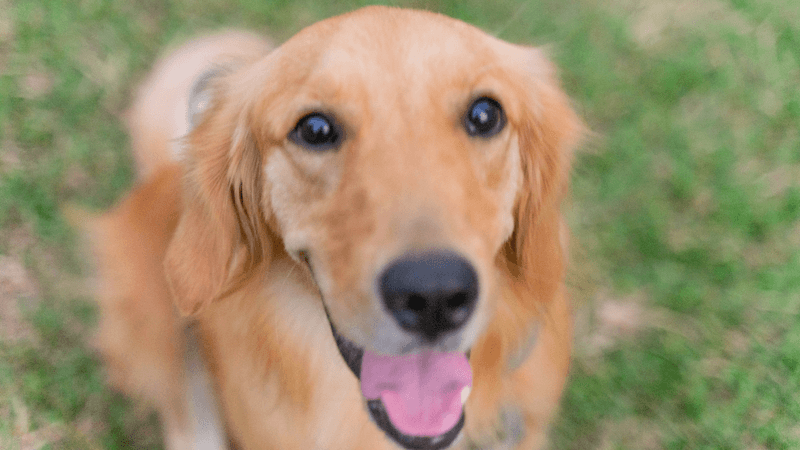
Nothing says “I’m over-the-moon happy to see you” like the famous full-body wiggle. When your dog’s entire body sways from side to side like a furry pendulum, they’re expressing pure, unfiltered joy at your presence.
This whole-body dance often appears when you return home after being away. Their tail, hips, and shoulders all move in a wave-like motion that’s practically impossible to fake. It’s the canine equivalent of jumping up and down with excitement.
This enthusiastic greeting is especially common in wiggly breeds like Labradors and Golden Retrievers, but any dog can break into this dance when they’re truly delighted to see their favorite human.
2. Leaning Against You
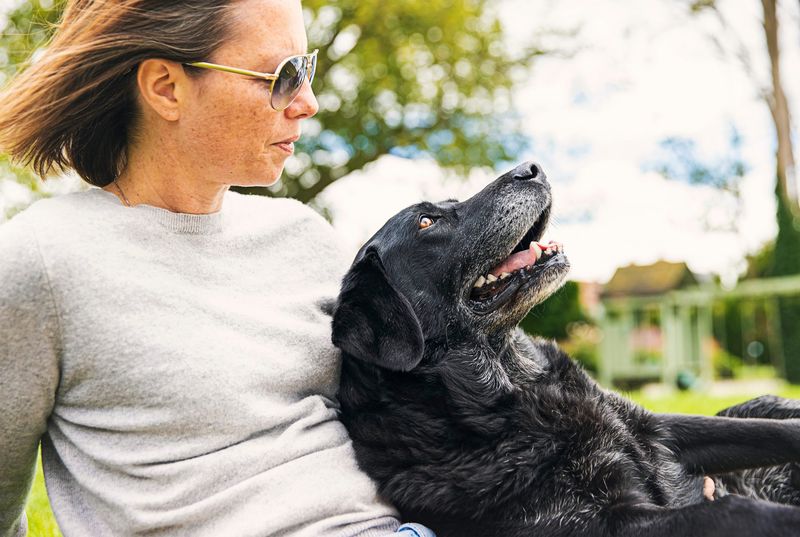
When your pup casually leans their weight against your leg or side, they’re not just being lazy – they’re showing deep trust and affection. This sweet gesture is their way of maintaining physical contact while feeling secure in your presence.
Many dog owners mistakenly interpret this as their dog being pushy or dominant. In reality, it’s quite the opposite! Your dog is displaying vulnerability by literally putting their weight on you, showing they trust you to support them both physically and emotionally.
This behavior often intensifies during moments when your dog feels particularly bonded to you, like during quiet evenings on the couch or after playing together.
3. Bringing You Their Favorite Toy

Finding slobbery tennis balls or squeaky toys in your lap? Your dog is paying you the highest compliment! When your furry friend brings you their prized possessions, they’re sharing something they value deeply.
This gift-giving behavior stems from pack mentality where sharing resources shows trust and affection. Your dog isn’t just initiating playtime – they’re including you in something that brings them joy. It’s their way of saying, “You’re my person, and I want to share my happiness with you.”
Some dogs will even bring you their toys when you’re sad or stressed, showing remarkable emotional intelligence and desire to comfort their humans.
4. The Soft, Lingering Gaze
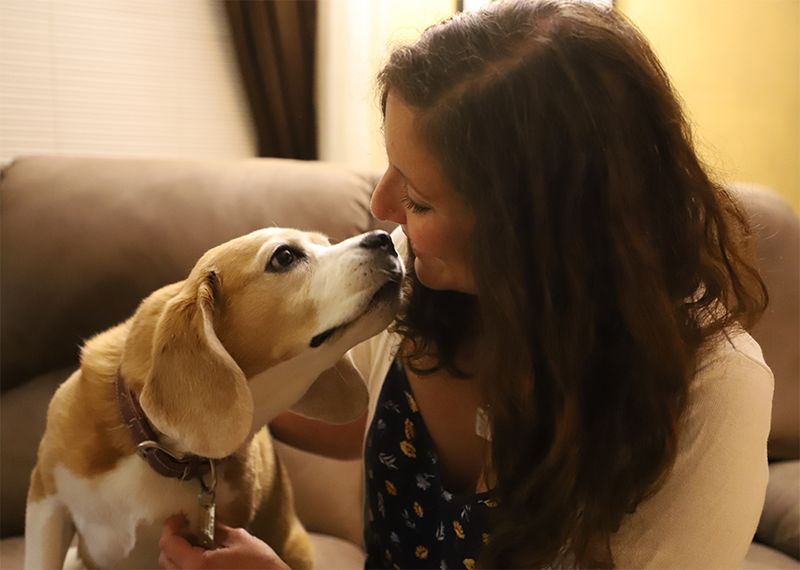
That heart-melting moment when your dog looks deeply into your eyes isn’t just adorable – it’s science! Studies show that mutual gazing between dogs and their humans releases oxytocin, the same bonding hormone mothers experience with their babies.
When your dog maintains soft eye contact without staring intensely, they’re expressing love and trust. In the dog world, direct eye contact can be threatening, so this gentle gaze represents a special connection reserved only for their closest companions.
Watch for relaxed eyes, maybe slightly squinted, with a calm facial expression. This loving look is their way of strengthening your unique bond and saying “I love you” without words.
5. Sleeping With Their Back Against You
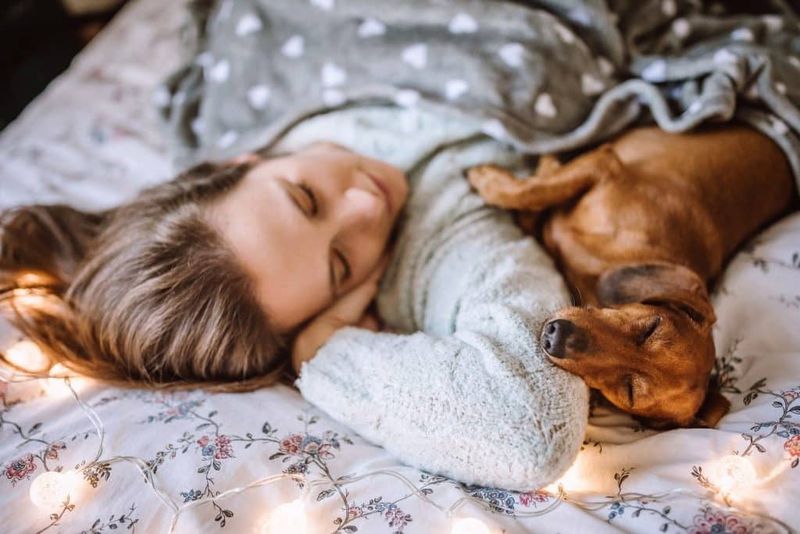
Finding your dog snoozing with their back pressed against you isn’t just about warmth – it’s a powerful display of trust. In the wild, this position would leave them vulnerable, so when your pup shows you their back, they’re saying they trust you completely with their safety.
This sleeping position allows them to face outward, remaining alert to potential dangers while knowing you’ve got their back (literally). Many dogs prefer this position with their favorite humans over more protective curled-up positions they might use when alone.
Next time your furry friend backs up against you for a nap, take it as the ultimate compliment to your role as their protector.
6. The Famous Face Lick
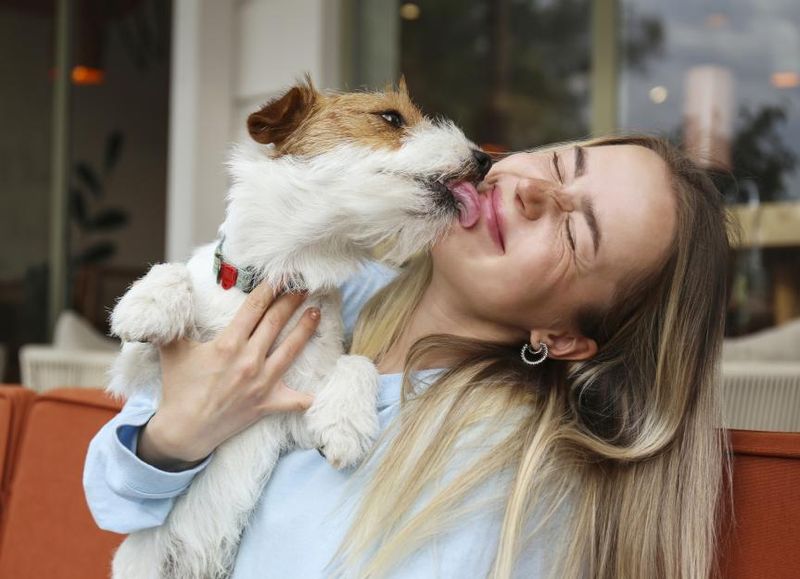
Those slobbery kisses have deeper meaning than you might think! When your dog licks your face, they’re displaying one of their most instinctive forms of affection, rooted in puppy behavior. Wolf pups lick their mother’s mouth to stimulate regurgitation of food – gross but true!
In domestic dogs, this behavior has evolved into a general greeting and bonding activity. The face lick releases pleasurable endorphins for your dog, creating positive associations with showing you affection. Some particularly affectionate breeds like Pitbulls and Boxers are famous for their enthusiastic licking sessions.
Your dog might also lick you to gather information about where you’ve been or what you’ve eaten – they’re literally tasting your day!
7. Following You Everywhere
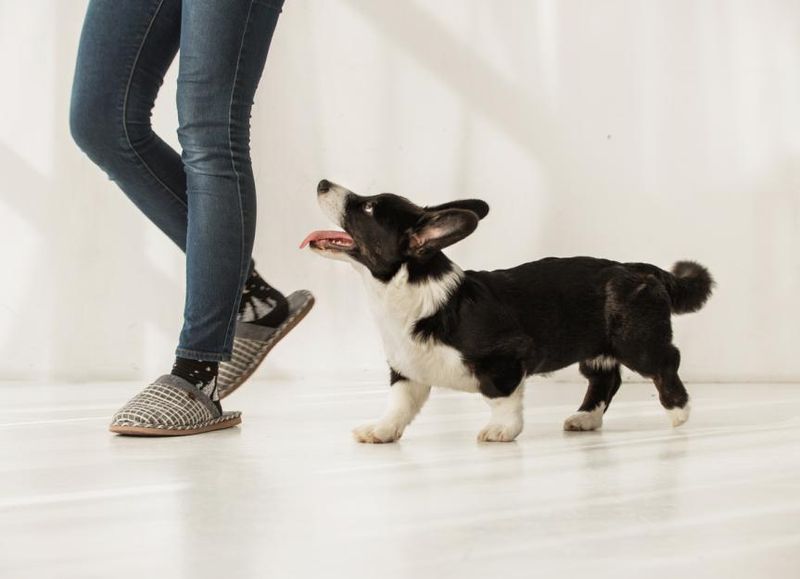
That furry shadow that trails you from room to room isn’t being clingy – they’re showing devoted attachment! Dogs are naturally pack animals, and in their mind, you’re the pack leader they want to stay close to.
This following behavior indicates your dog considers you essential to their security and happiness. They’re not just monitoring your movements; they’re actively choosing your company over solitude. Velcro dogs like Vizslas and German Shepherds are particularly known for this shadowing behavior.
While some independence training helps prevent separation anxiety, appreciate this behavior for what it truly is – a heartwarming sign that your presence is the highlight of your dog’s day.
8. The Excited Morning Greeting

That enthusiastic wake-up committee of wagging tails and happy whines each morning isn’t just about breakfast! Your dog’s excited morning greeting shows you’re the highlight of their day, even after just a night’s separation.
Dogs live completely in the moment, so this daily celebration is genuine joy at reuniting with their favorite person. The intensity of these greetings often reflects how bonded your dog feels to you. Notice how they might check in with you first before heading to their food bowl? That’s love prioritized over basic needs!
This morning ritual also serves as an important daily reconnection, helping strengthen your bond through consistent positive interaction right from day’s start.
9. Rolling Over For Belly Rubs
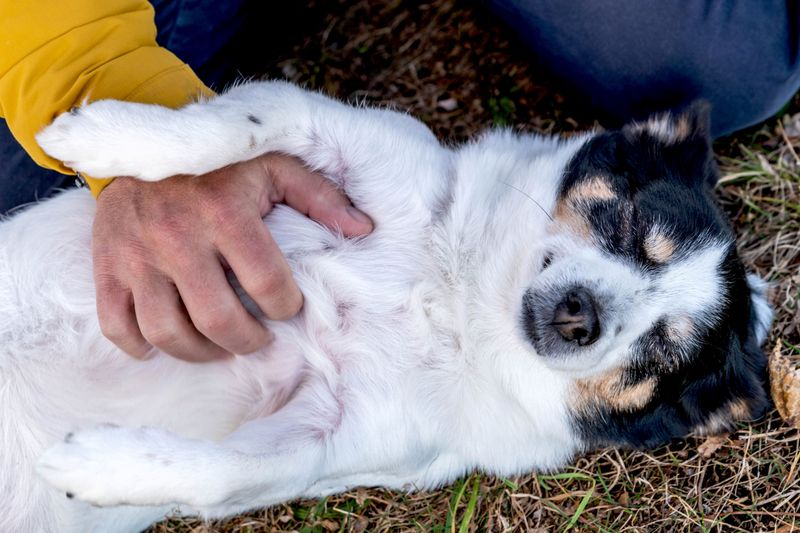
When your dog flops over and exposes their belly, they’re showing remarkable vulnerability that speaks volumes about their trust in you. The stomach is one of a dog’s most sensitive and unprotected areas – in the wild, they would never expose it to potential threats.
This position puts them at a complete disadvantage physically, making it impossible to quickly defend themselves or escape. By choosing this position with you, they’re essentially saying, “I know you would never hurt me, and I feel completely safe with you.”
The happy wiggling that often accompanies this position shows they’re not just tolerating your touch – they’re actively enjoying this special bonding moment.
10. Cuddling After Eating
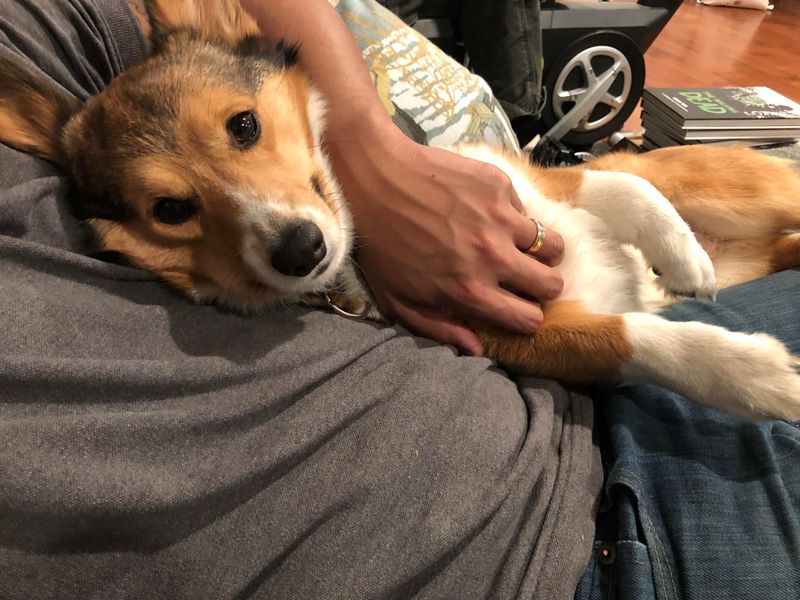
When your pup seeks cuddle time right after finishing dinner, they’re showing a special form of trust and contentment. After eating, dogs naturally feel vulnerable as they digest – in the wild, this would be a risky time when they might need to defend their food.
By choosing to snuggle with you during this vulnerable period, they’re demonstrating complete confidence in your protection. This post-meal affection also indicates they associate you with comfort and safety, not just as a food provider.
Some dogs even have specific post-dinner cuddle routines, like circling three times before settling against you – these rituals are their way of establishing connection in their daily rhythm.
11. Turning Their Back While Being Petted
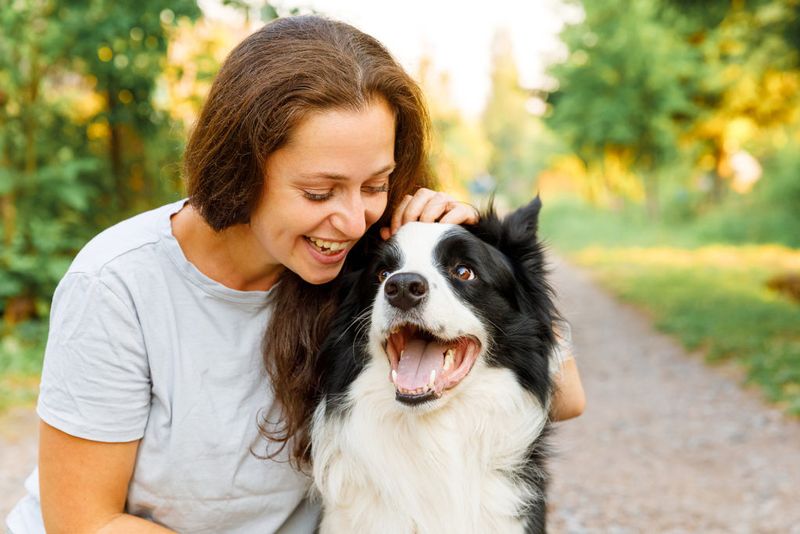
Ever notice how your dog sometimes turns their back to you when you start petting them? Don’t be offended – they’re actually showing deep trust! By positioning their back toward you, they’re exposing an area they can’t easily monitor or protect.
Many dogs particularly enjoy butt scratches near the base of their tail, an area they can’t reach themselves. When they present this spot to you, they’re combining practical grooming needs with a display of vulnerability and trust. This behavior demonstrates they feel completely secure in your presence.
Watch how they might lean into your touch or look back at you with half-closed eyes – signs they’re thoroughly enjoying this bonding moment.
12. The Stiff Body And Averted Gaze
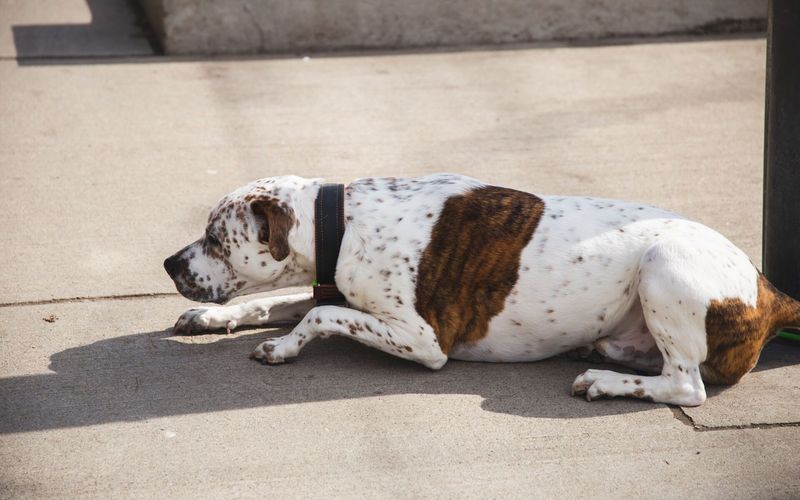
When your normally affectionate dog suddenly becomes a statue with a turned head, they’re politely saying, “Not now, please.” This stiffened posture with averted eyes is their diplomatic way of creating boundaries without aggression.
Dogs use this subtle body language when they’re feeling overwhelmed, uncomfortable, or simply need some personal space. It’s similar to how we might cross our arms when we’re not in a social mood. Respecting these signals is crucial for maintaining trust in your relationship.
If you notice this behavior during petting sessions, your dog might be experiencing sensory overload or minor discomfort that they’re trying to communicate in the gentlest way possible.
13. The Lip Lick And Yawn Combo
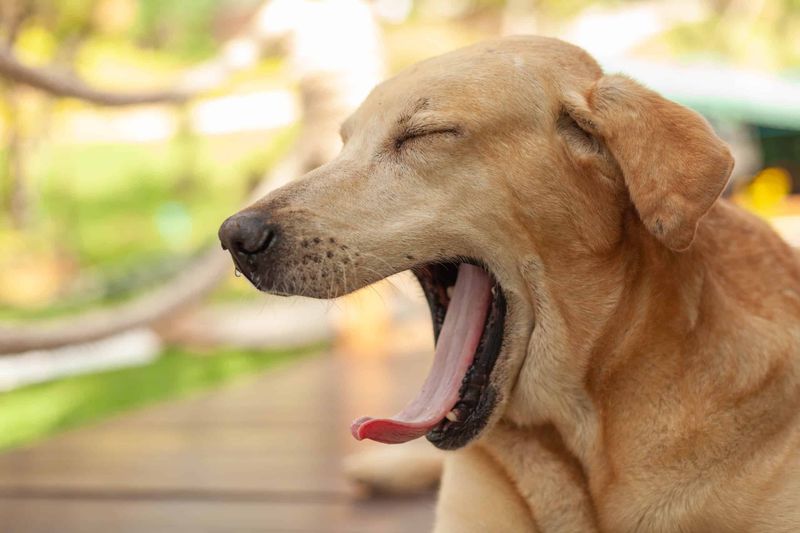
That quick tongue flick across the nose followed by a dramatic yawn isn’t about hunger or tiredness – it’s your dog’s way of saying they’re feeling stressed or uncomfortable. These calming signals are subtle communications that many owners completely miss.
Lip licking outside of mealtime often indicates anxiety, while stress yawns look different from sleepy yawns – they’re more sudden and often happen when your dog is clearly not tired. When these behaviors appear together, your dog is experiencing significant discomfort with the current situation.
Common triggers include overly enthusiastic greetings from strangers, loud environments, or interactions they find threatening. Recognizing these signals helps you protect your dog’s emotional wellbeing.
14. The Whale Eye Look
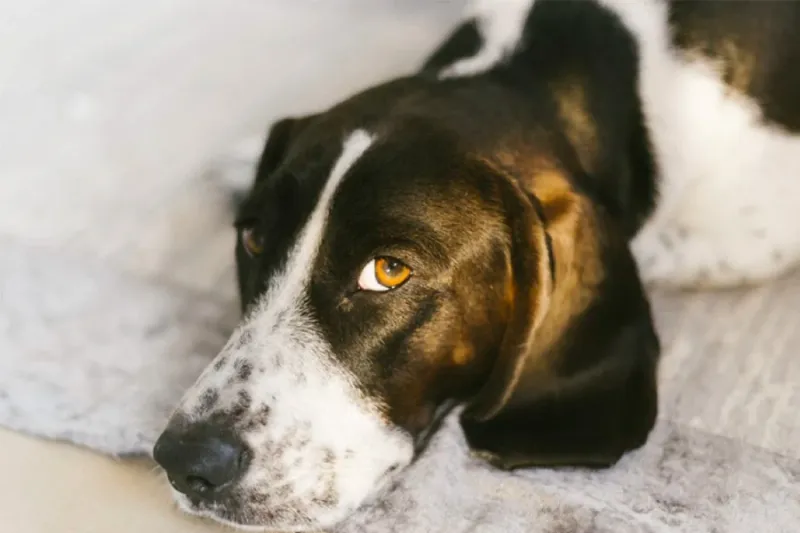
When you can see the whites of your dog’s eyes (called “whale eye”) while their head remains still, consider it a flashing yellow caution light. This side-eye look, where they glance at something without turning their head, signals significant discomfort or anxiety.
This expression typically appears when a dog feels trapped or threatened but is trying to avoid conflict. You might notice it when a child hugs them too tightly or when they’re cornered during play. The stiffened body that often accompanies whale eye indicates your dog is holding back their natural response.
Recognizing this subtle warning sign allows you to intervene before your dog feels forced to communicate more dramatically through growling or snapping.
15. Hiding Or Retreating To Their Safe Space

When your dog disappears under the bed or retreats to their crate during active household moments, they’re clearly communicating their need for a timeout. This self-imposed isolation isn’t rejection – it’s healthy boundary-setting that deserves respect.
Dogs naturally seek quiet refuges when they’re overwhelmed, tired, or simply need to recharge their social batteries. Even the most people-loving dogs benefit from having designated safe spaces where they won’t be disturbed. Teaching children to honor these boundaries is especially important for family harmony.
Pay attention to what triggers this retreat behavior – parties, thunderstorms, or certain visitors – as understanding these patterns helps you better support your dog’s emotional needs.






